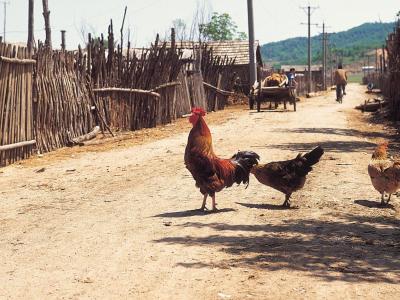Dec 23, 2010 (CIDRAP News) – Influenza activity jumped in the United States last week along with other Northern Hemisphere locations, and an official from the World Health Organization (WHO) said it's not yet clear if this season will make its mark as a bad one.
The US Centers for Disease Control and Prevention (CDC) said today that flu activity is widespread for the first time this year in one state, Mississippi, while the number of states reporting regional activity for the week ending Dec 18 rose to 13 states and Puerto Rico, up from 4 states and Puerto Rico the week before.
Earlier this week the WHO and health officials in England said that flu activity was starting to increase in many European countries, led by a spike in 2009 H1N1 activity in the United Kingdom. In contrast, flu activity in the United States in increasing slowly, with influenza A (H3N2) and influenza B as the dominant strains.
Meanwhile, the situation in some countries, such as Egypt, which straddles Europe and sub-Saharan Africa, is more complex. Like its European neighbors, Egypt has reported rising 2009 H1N1 levels. It is also starting to report more suspected and confirmed H5N1 influenza cases.
Egypt at flu region nexus
Egypt's health ministry today reported a new H5N1 case, an 11-year-old child from Luxor governorate who is hospitalized in critical condition, according to a ministry statement translated by volunteers with the FluTrackers infectious disease message board.
If her illness, and the illness of a 25-year-old woman from Beheira governorate whose case was announced by the ministry on Dec 15, are confirmed by the WHO, the child will be listed as Egypt's 115th case, of which 37 have been fatal.
Dr Tony Mounts, team leader for epidemiology and surveillance with the WHO's Global Influenza Program, told CIDRAP News that last year flu activity in North African countries seemed more closely aligned with Europe than sub-Saharan Africa. For example, 2009 H1N1 activity in West Africa didn't peak until early 2010, while activity in countries along the southern Mediterranean coast peaked in the fall of 2009 along with many European countries.
He said the WHO doesn't have enough historical data to know if this is the usual pattern, but added it wouldn't be surprising. The WHO is still gathering information on H5N1 cases in Egypt, but Mounts said this is the time of year that Egypt and other countries typically experience H5N1 cases. "H5N1 seems to follow a seasonality that is similar to other influenza viruses," Mounts said.
"This year, there really isn't enough data yet to say definitively that Egypt has started their influenza season, but the appearance of an increase in severe cases of H1N1 there coinciding with similar observations in Europe is highly suggestive," Mounts said.
Vigilance for at-risk populations
While it's too soon to characterize the Northern Hemisphere's flu season, the Southern Hemisphere's season that just passed was relatively mild, he said. A piece of good news from global health labs is that surveillance for the D222G mutation, suspected as more common in some severe 2009 H1N1 infections last year, isn't raising any red flags this year.
"The magnitude of the problem in comparison to last year is still uncertain but does not appear to be worse than 2009, Mounts said.
Regardless of flu activity levels in a particular season, people who are at high risk for flu complications always warrant increased attention, Mounts said.
"We would really like to remind people, especially healthcare workers, that high-risk people should be vaccinated, where the vaccine is available, and should be considered for early treatment with antivirals if they develop flu-like illness in areas where surveillance demonstrates circulation of H1N1," Mounts said.
US flu activity rises
The CDC said today that doctors visits for flu-like illness is still low nationally but are above baseline in the Southeast. The number of flu- and pneumonia-related deaths dipped slightly and stayed below the epidemic threshold. No pediatric deaths were reported.
The number of respiratory specimens testing positive for influenza topped 15%, up from 11% the week before.
All three seasonal strains are circulating in the United States, with most of it influenza A (H3N2) and influenza B. The CDC said the strains it has analyzed are still a good match to the seasonal flu vaccine.
In Canada, flu levels appear to be rising as well, according to the CDC's latest international flu update. The number of doctor's visits for flu-like illness is within the expected range for this point in the flu season, but the percentage of respiratory specimens testing positive for flu is higher than anticipated, rising from 8.3% to 10.8% over the previous week.
Much of the CDC's global flu reports mirrored the WHO's report earlier this week, which highlighted rising flu activity in Europe, along with active circulation in northern China, Mongolia, and Sri Lanka. The CDC noted that in the Southern Hemisphere, where overall flu activity is low, Uruguay reported H3N2 circulation, which is decreasing.
See also:
Dec 23 FluTrackers thread
Dec 23 CDC flu surveillance update
Dec 23 CDC global flu update


















